Keywords
|
| distribution generation, OLTC, STATCOM, AVR relay, PFC, distribution system, voltage control |
INTRODUCTION
|
| Now days the electrical power transmission and distribution system normally operated at multiple voltage level. Voltage is one of the most important parameter for the control of power system when connected to DG. The connection of DG in distribution system has created a challenge for distribution network operator to change their usual passive approach to an active system. The conventional distribution networks are designed based on the assumption of unidirectional power flow with the increasing connection DG. The network has become more dynamic with bidirectional power flow. It is known as active distribution network. |
| An active distribution network is defined as distribution network with system in place to control a combination of distributed energy resource comprising of generator and storage. |
| Voltage controls in active distribution system have been decomposing into three hierarchical level i.e. primary, secondary and tertiary levels. The primary control is performed by AVR (Automatic Voltage Regulator), the secondary control is performed by on load tap changer (OLTCs) meanwhile tertiary control is a short operation planning is developed to coordinate the action of primary & secondary control device according to secured operation and economic criteria based on load and generation forecast. |
| On the other hand voltage control in distribution system is normally achieved by in cooperating on load tap changer (OLTCs) and switched shunt capacitor only in most distribution system . |
| The voltage and reactive power equipment in distribution system are mostly operated based on and assumption that the voltage decreases along the feeder on the other connection of distribution generation will fundamentally alters the feeder voltage profile which will obviously effect the voltage control in distribution system . |
| The modernization of electricity distribution system now a day coordinated voltage control developed into distribution system. Different method of short term operation planning for distribution system voltage control have been proposed .This paper present a review of different voltage control method in distribution system in the presence of DG. |
VOTAGE CONTROL IN ELECTRICAL DISTRIBUTION SYSTEM
|
| The voltage variation ΔV across the line can be represented by the following equation |
 |
| Where ΔV indicates voltage variation P and Q represents active and reactive power output of DG, X and R are reactance and resistance of line connecting to DG. V is the nominal voltage at the terminal of DG. |
| A simple radial feeder is connected with DG is shown on figure. On Load Tap Changer transformer load a reactive power compensator , automatic voltage controller , line drop compensator , energy storage device is also connected on the system . |
| Generally the X/R ratio of distribution system is relatively low than that of transmission line. According to equation 1 , power generated by DG will result in voltage rise or drop on the distribution network , feeder with high impedance . The voltage variation would also depend on several factor including DG size , location and method of voltage regulation . |
ON-LOAD TAP CHANGER
|
| The most common voltage control technique in the distribution system is to use OLTCs which maintain a stable secondary voltage by selecting appropriate tap position. |
| It is usually in conjunction with AVC relay and LDC . The AVC relay continuously monitors the output voltage from transformer, a tap change command will be initiated when voltage is above preset limit . The LDC is used to compensate additional voltage drop on the line between transformer and load location particularly in the far end of feeder and OLTCs involves various control characteristics such as line drop compensation (LDC) time grading for accommodating operation in series of transformer as well as variety of circulating current compensation technique for operation of parallel transformer . |
| LDC monitors the voltage at the secondary side of the transformer . It measures secondary current to stimulate the voltage drop across the feeder that exist between transformer and the load . The voltage drop along the feeder impedance is used to boost the voltage regulated at the transformer terminal therefore ensuring the correct voltage level maintains at the load where it is required . |
| 2.1.1 OPERATION IN SERIES |
| There are multiples voltage level used for generations. Transmission and distribution in most power supply networks. In each area on load tap changer transformer will be used between these different voltage level as shown |
| Due to uncoordinated control schemes between the up stream and down stream controller. |
| 2.1.2 OPERATION IN PARALLEL |
| With the growing customer demand for the higher security and reliability of supply it is common practice for DNOs to parallel transformer on one side or across the network in order to meet the engineering recommendation. |
| There are some factors that might affect the AVC scheme such as power factor, DG integration or varying load. The standard voltage control schemes for parallel transformer are as follows |
| Dai and Baghzouz (2003) showed that the coordination between DG output and OLTCs tap control is a necessity in order to allow higher DG integration. Otherwise power generated level can be severely limited if substation voltage is kept constant by the OLTCs transformer. |
| Kim and Kim (2001) proposed an algorithm that can integrated DG on multiple feeder by using LDC without changing OLTCs position. |
| This method can minimize the voltage variation prevent frequent OLTCs operations however it restrict the DG power integration. In DG connected system by Viawan at al (2007) implemented OLTCs/LDCs/AVCs relay on a MV and a multiple MV feeder network respectively. |
GENRATOR POWER FACTOR CONTROL
|
| The uses of AVC relay with DGs synchronous generator are implemented to adjust their reactive power output of bus bar voltage. This operation could result in several severe problem including high current and over current protection and disconnecting the generator from the network. For ensuring network safety DGs are not allowed to use AVC to adjust their voltage. So power factor control has been implemented with DG. |
| In power factor control P/Q is maintained constant. According to equation 1, P is directly proportional to voltage variation. If Q can be compensated for voltage variation generated by P by adjusting in opposite direction. So voltage variation can be maintained within the limit. For voltage increment situation the more leading power factor at where the DG is connected. |
| Wallace and Kiprakis (2002) proposed a voltage control method for DG which assumed a more flexible directive from DNOs in terms of voltage control by DG. The voltage control technique is able to keep DG online during light heavy load condition by combining AVC and PFC. This technique was also able to improve steady state and slow transient profile. |
2.3 STATIC SYNCHRONOUS COMPENSATOR
|
| A STATCOM is a flexible AC transmission system (FACTS) device it is a voltage source converter based device which a DC input voltage into an AC output voltage in order to compensate the reactive power ofthe system . usually the reactive power output of a STATCOM is regulated to maintain the minimum AC voltage at the bus to which STATCOM is connected .it can provide control in both transmission as well as distribution system with a fast response control. |
| Due to the fast response of STATCOM modern control strategy such as linear quadratic regulator (LQR) can be provided for voltage control. Rao et al.(2003) implemented PI ,pole –placement and LQR controller on the STATCOM respectively .the performance were compared in terms of response profile and control effort. |
| 2.3.1 THE PRINCIPLE OF STATCOM OPERATION |
| The STATCOM operation is illustrated in figure .the STATCOM exchange reactive power with the grid .the exchange of reactive power between the converter and the grid can be varied by amplitude of the three phase STATCOM voltage (USTSTCOM). If USTATCOM is increased higher than the grid voltage, UGRID , the converter generates capacitive reactive power for the grid . if USTATCOM is decreased lower than the grid voltage the converter absorbs inductive – reactive power from the grid. |
FUTURE DEVELOPMENT OF VOLTAGE CONTROL WITH SMART GRID
|
| With the increasing power demand and increasing use of renewable energy, the traditional power grid is converted to Smart grid in the future. |
| 3.1 CONCEPT OF SMART GRID |
| The Smart grid uses intelligent devices and digital communication converted power system to enhance the the performance of transmission & distribution grid. This can assess its control distributed resources integration and optimize the response of smart application of last user. The efficiency and reliability can be improved & active roles from end consumer are involved in smart grid in order to save the consumer money. |
| 3.2 INFLUENCE OF SMART GRID |
| Smart grid are consumer interactive to make the grid truly intelligent . there are many challenges and problems need to be addressed with the use of smart grid . the sustainable energy resource are used more & more such as wind, solar, and hydrogen to result in the consumer integration inevitable to the grid performance .a high degree of DG penetration will happen due to the high efficiency and low environment impact of these preferred DG sources. |
CONCLUSION
|
| This paper shows the review of the existing voltage control method which are used to regulate the voltage level with their features. |
| Controlling the voltage on a distribution system with DG is an important and challenging one for the DNOs , DG owner and load customer . with increasing DG connections on the network , this issue is becoming more complex. since each existing control method has their advantages and disadvantages , an ideal solution is to employ different method in different scenario with balance between cost and technical impacts. |
| The main advantage of new method is the measurements are taken locally . so reduce the voltage error and maintain the voltage profile of the system with DG penetration .the STATCOM is a possible device to operate co-ordinate with OLTC to meet the requirement offered by use of smart grids. |
Figures at a glance
|
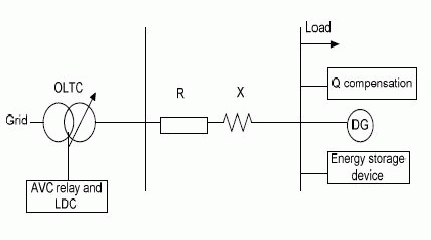 |
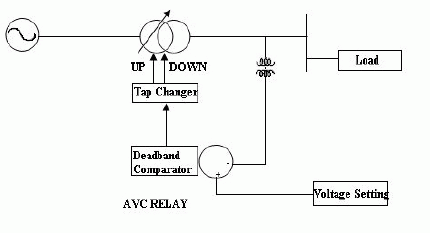 |
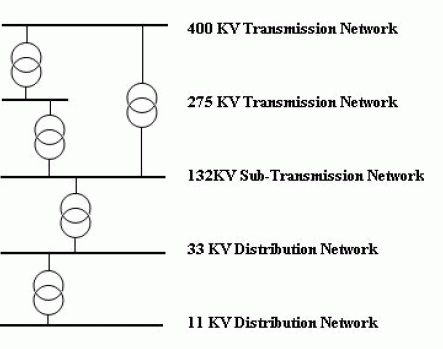 |
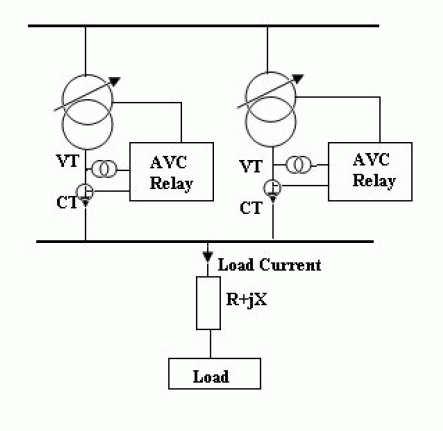 |
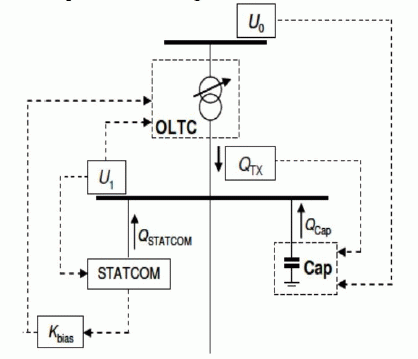 |
| Figure 1 |
Figure 2 |
Figure 3 |
Figure 4 |
Figure 5 |
|
| |
References
|
- J.H. Harlow, “Transformer Tap Changing Under Load: A Review ofConcepts and Standards,” in Proc. 1993 64th Annual EngineeringConf.,Kansas City, Missouri, pp. 305-310.
- M. Fila, G.A. Taylor, J. Hiscock, “Systematic modelling andanalysis ofTAPP voltage control schemes,” 42nd International Universities Power Engineering Conference, UPEC 2007, pp. 327-334, Brighton, UK, 4-6September 2007.
- S.P. Chowdhury, C.F.Ten and P.A.Crossley, “Operation and Controlof DG Based Power Island in Smart Grid Environment,” CIREDSeminar 2008: Smart Grids for Distribution, Frankfurt, 23-24 June2008.
- Xu Wei, Zhou Yu-hui and Zhu Jie-lin, “Energy-efficientdistribution in smart grid,” International Sustainable Power Generationand Supply Conference, SUPERGEN 2009, Nanjing, pp.1-6, 6-7 April2009.
- C.M. Hird, H. Leite, N. Jenkins & H. Li, Network volatge controllerfor distributed generation, IEE Proc.-Gener, Transm, Distrib., 151(2),March 2004, 150-156.
- P.N. Vovos, A.E. Kiprakis, A.R. Wallace & G.P. Harrison,Centralized and distributed voltage control: impact on distributedgeneration penetration, IEEE Tran-sactions on Power Systems, 22(1)February 2007, 476-483.
- F.A. Viawan& D. Karlsson, Voltage and reactive power control inSystems with synchronous machine based distributed generation, toappear in IEEE Transactions on Power Delivery.
- Viawan F. A. and Karlsson D., Coordinated voltage and reactivepower control in the presence of distributed generation, IEEEPower and Energy Society General Meeting - Conversion and Delivery of Electrical Energy in the 21st Century (2008), 1-6.
- Fila M., Reid D., Taylor G. A., Lang P., and Irving M. R.,Coordinated voltage control for active network management ofdistributed generation, IEEE Power & Energy Society GeneralMeeting (2009), 1-8.
- Hird, N. Jenkins, and P C. Taylor. An active 11kv voltagecontroller: Practical considerations. CIRED 17th InternationalConference on Electricity Distribution, May 2003.
|